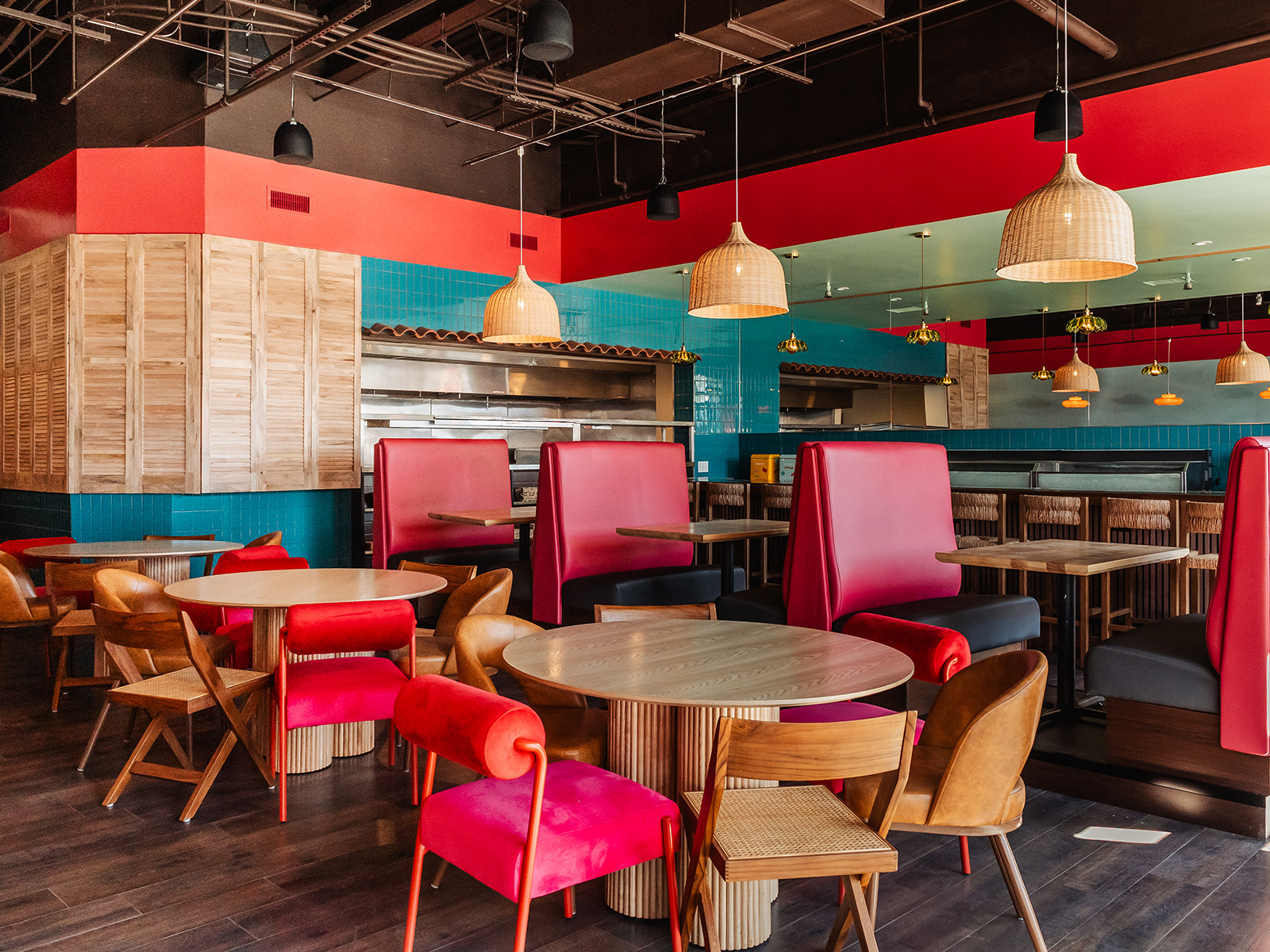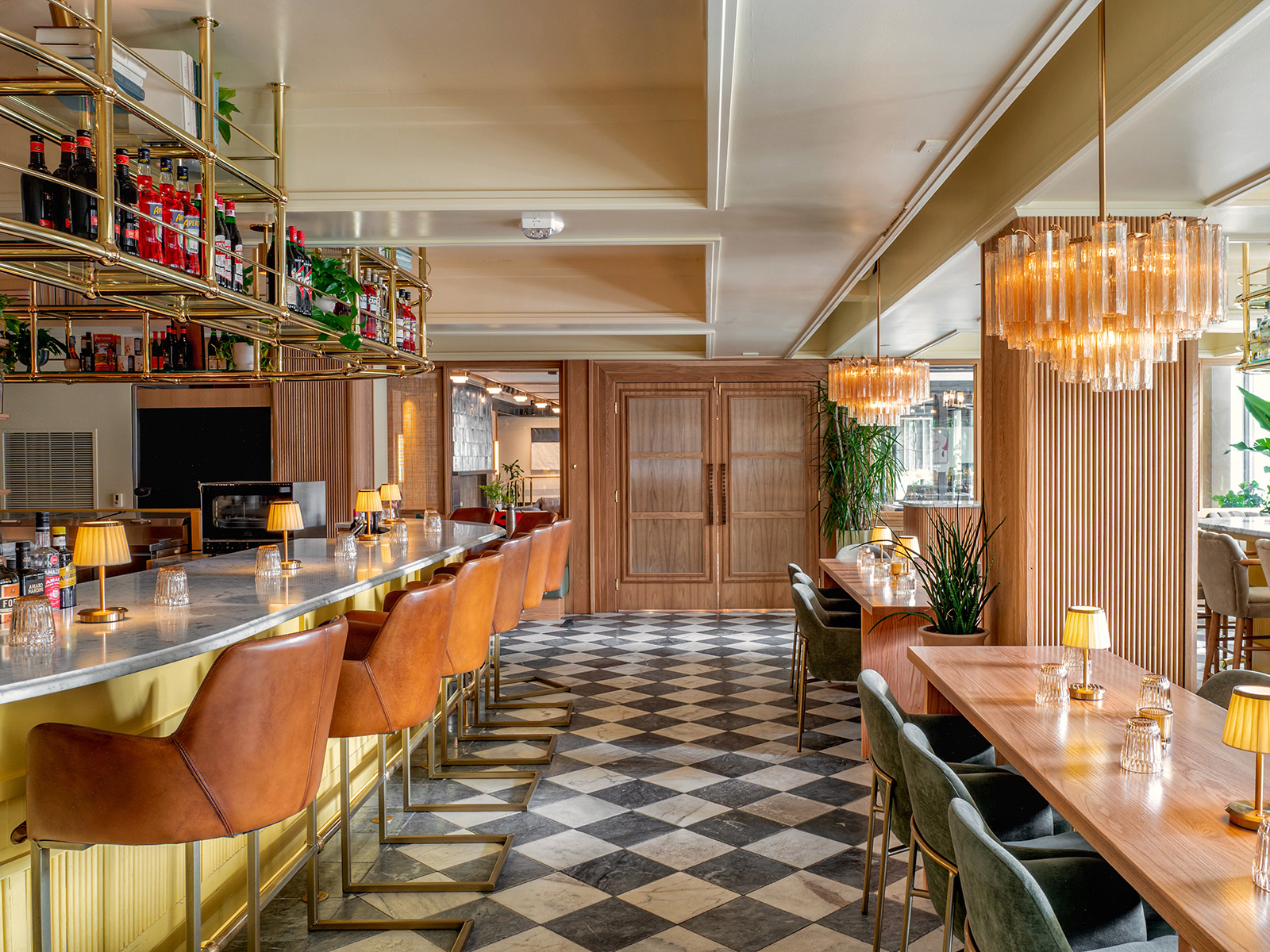The Local newsletter is your free, daily guide to life in Colorado. For locals, by locals.
For design lovers, a restaurant’s aesthetic is nearly as important as its menu. Sure, there are times when an eatery’s interiors are the least of your concerns—like when you need to snag a quick sandwich between back-to-back meetings, cure a sudden bout of hanger by carb-loading with fresh pastries, or soak up the previous night’s tequila shots with the warm hug of a breakfast burrito. But for the evenings when you want to impress a date, savor precious kid-free time, or celebrate a milestone, a restaurant’s atmosphere can make or break a meal.
Luckily, several of Denver’s newest additions to the culinary scene serve up serious style alongside flavorful food. Here, five of our favorite new eateries that speak to all five senses.

Catira
Manuel and Clare Sucre opened this Greenwood Village eatery in April, bringing the culture and cuisine of Manuel’s hometown (Caracas, Venezuela) to the Mile High City, where Clare grew up. The husband-and-wife duo offer no-frills street food—including a variety of empanadas and arepas—in a vibrant, Caribbean-inspired space. “Most Venezuelan restaurants around the world focus on using the colors of the flag and framed photos or motifs of the local landmarks,” says Clare, whose golden locks inspired the restaurant’s name (which means “blondie” in Venezuelan). “We knew we wanted to be less literal and lean more into what you would experience in your surroundings if you were walking through the country.”
Influenced by the colors and materials Clare noticed on her first trip to Venezuela in April 2024, Catira’s interiors feature rattan pendant lights, aqua-blue wall tile, hot pink vinyl booth seating, and a banana leaf mural. A hallway leading to the bathrooms is lined with framed photos of Manuel’s family and vintage Venezuela. “It was important to showcase a side of Venezuela that most Americans aren’t hearing about in the news,” Clare says, “to nod to the vibrancy of the country when it was the premier destination in Latin America in the 1950s to ’80s.” 5370 Greenwood Plaza Blvd, Unit 107
Bar Amorina
According to Instagram, you were the only one who didn’t spend the summer sipping spritzes on the Amalfi Coast. Thankfully, this chic cocktail bar on the ground floor of Clayton Hotel & Members Club was designed to transport its patrons to the Mediterranean—no passport required. Culinary Creative Group added Bar Amorina (which means “sweetheart” in Italian) to its roster of buzzy Cherry Creek bars (Ay Papi, Forget Me Not) in January. The restaurant group tapped local hospitality design studio Maximalist to transform the dark, nightclubesque space (previously home to Cretans) into a light-and-bright lounge inspired by chef Max Mackissock’s love of Italy.
Interior walls and exterior brick were repainted a buttercream yellow “to give the space a sun-kissed glow,” says Abigail Plantier, founder and principal designer of Maximalist. Italian marble bar and tabletops, velvet-upholstered barstools with scalloped detailing, and amber glass chandeliers add glamour to the interiors, while striped awnings and Parisian-inspired bistro seating set a coastal tone on the patio. The space was finished with Roman bust planters, colorful art illuminated by brass gallery lighting, and modern fluted-wood details. “The goal was not to replicate Italy, but to interpret it through a contemporary lens,” Plantier says. 233 Clayton St.
Magna Kainan
At this lively restaurant on the north end of RiNo, James Beard finalist Carlo Lamagna shares a contemporary Filipino menu inspired by his transcontinental upbringing in the Philippines and the midwestern United States. The sister concept to Lamagna’s Portland, Oregon–based Magna Kusina, Magna Kainan serves an interior design scheme as vibrant as its dishes (which landed it on our list of the 25 best restaurants in Denver this year). A playful color palette nods to the hues of the Filipino flag, which hangs prominently at the center of the dining room. The space is packed with bold art, a trio of paintings and a large mural (all by Denver artist Nikki Cruz) that depict the people, animals, and plant life found in the Philippines. A cluster of oversize woven pendant lights hang above a long communal table to capture the spirit of kamayan, a traditional Filipino feast where food is laid out on a bed of banana leaves and eaten by hand. “It’s an atmosphere that invites people to gather, share, and experience the food in a way that feels both approachable, celebratory, and like home,” says chef de cuisine Jodee Reyes. 1350 40th St.
Tamayo
When Chef Richard Sandoval decided to overhaul his long-standing Larimer Square restaurant, he viewed it as a way to “honor [Tamayo’s] rich history while creating a more modern, vibrant, and elevated atmosphere that matches the evolution of our cuisine and Denver’s dynamic dining scene,” he says. Tamayo 2.0 debuted in March after a two-month closure.
The sophisticated redesign, led by Denver’s DeLorenzo Productions, leaned into Mayan artistry and the landscape of Mexico in the main dining room with playful tassel chandeliers, ceramic flowers, and handwoven wall coverings. The upstairs dining area and patio also received a glow-up with pops of blues, pinks, and yellows that lighten and brighten the space and direct diners’ focus to the views over the city and toward the mountains. One thing has remained though: the tile mural behind the main bar. “It’s a piece that has always grounded the space,” Sandoval says, “and continues to serve as a visual link between our past and present.” 1400 Larimer St.
Alteño
Chef Johnny Curiel’s fourth restaurant (it joins his Michelin-starred spots Alma Fonda Fina and Mezcaleria Alma, as well as Cozobi Fonda Fina in Boulder) may be his most personal: It was inspired by the food traditions passed down from Curiel’s father. When Alteño (which translates to “highlander”) opened in Cherry Creek North’s Clayton Hotel & Members Club in March, it did so with a look befitting the Jaliscan Highlands region of Mexico where Curiel spent his childhood. “The space was designed to sing with the food,” says Agatha Strompolos, founder of Denver-based Agatha Jane Interior Design. “[It] mirrors the menu in that there is a huge focus on celebrating the earth’s natural bounty and being in tune with the land.”
Handmade Tonalá ceramics, leather details, and dark, earthy tones (butter yellow, charcoal black, muted Mayan blues) that mimic Jalisco’s landscape bring the Highlands to life in Denver. One wall is decorated in leather fringe from a traditional mariachi uniform, while another elicits thoughts of home with doilies sourced from Mexico and handwoven tortilleros (baskets typically used to keep tortillas warm). Denver artist Delton Demarest painted a striking mural on velvet that hangs above the 12-seat bar. With Jalisco being the birthplace of tequila, it’s the perfect perch from which to enjoy a sip from Alteño’s selection of 60-plus agave spirits. 249 Clayton St.


























